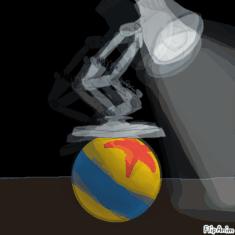
蝶

Luxo Jr. and his ball

+Wandering Gardener+

Miss Fortune^^

Skidaddle

Music is my friend ;3

Untitled
youve been sti- hold on.

21 comments

here-fishy-fishy[OP]
09.09.2021 00:01
Linkshitpost lmao

First off, though, we’re going to have to reframe the question, because the truth is not all insects are bugs. So, let’s start with the definition of an insect.
According to the department of entomology (that’s the study of insects, including bugs) at the University of Nebraska, “Insects are animals… with over 1 million different kinds [making them] the most numerous of all life forms on Earth.”
These Nebraska entomologists point out there are four things that make an insect an insect:
A segmented body.
Paired, segmented appendages (aka, legs).
Bilateral symmetry (their left and right sides look the same).
An external skeleton (as opposed to an internal one like ours) that molts (or sheds) as the animal grows.
Another way to define insects is to zero in on their specific scientific classification. Insects are those species which fall under Kingdom Animalia (i.e. animals), Phylum Arthropoda (or arthropods, meaning animals with exoskeletons, which includes crustaceans like shrimp and lobster), Cla

Class Insecta (aka, insects). Insects include species like ants, bees, beetles, butterflies, moths, cockroaches, grasshoppers… the list goes on and on.
Even though the term “bugs” is used colloquially to refer to insects writ large, technically and scientifically, a “bug” is all of those things that make up an insect, and then some. Specifically, bugs are members of the Order Hemiptera, so Animalia>Arthropoda>Insecta>Hemiptera.
What mostly distinguishes Hemiptera from other insects is their mouthparts, which have no teeth and are instead designed to pierce tissues and suck liquids. But they get their name from another distinguishing characteristic – their wings.
Hemiptera means, more or less literally, “half wing,” which refers to the way in which insects of this Class typically have some combination of both hard and soft tissue wings (an example of hard tissue wings would be beetles, but housefly wings are made of soft tissue – Hemiptera have both).
Examples of Hemiptera include planthoppers, s
Comment removed

stink bugs, cicadas and more.
So, let’s see where spiders fit in all of this.
It’s easy to see why spiders aren’t, technically speaking, bugs (as in, among the Order Hemiptera) – as anyone who’s ever been face-to-face with a spider can tell you, they don’t have wings.
But no one ever said insects had to have wings, right? That’s because, although most do, they don’t all feature wings. Worker ants, lice, fleas and silverfish are all bona fide – yet wingless – insects.
So, do spiders have segmented bodies? Yes, they do!
Do they have legs? Yep!
How about bilateral symmetry? Most definitely.
And an exoskeleton? Ding-ding-ding! I believe we have a winner!
Spiders are obviously, for sure, insects… right?
Wrong!
Okay, here’s where a little trickery came into play. We left out a couple of key details that separate insects, which you’ll recall are from the Class Insecta, from spiders, which are in the Class Arachnida (arachnids). Both have segmented body parts, but insects have three p

but insects have three parts – a head, a thorax and an abdomen. Spiders only have two – the head and thorax are one part, called a cephalothorax, and an abdomen.
Also, both insects and spiders have legs, but it’s how many that differentiates them – insects have six legs, spiders – eight.
So, there you have it. Mystery solved. Spiders are neither bugs (Hemiptera) nor insects (Insecta) but a Class all their own – Arachnida, or arachnids. This Class includes not just spiders; but scorpions, mites and ticks as well.
Why does this matter? Well, when you’re in the business of battling pests like we are, you have to know everything you can about your enemy to know how to best take them down. The treatments we deploy are different for insects, bugs and spiders, and what works for one won’t necessarily work for the others.
